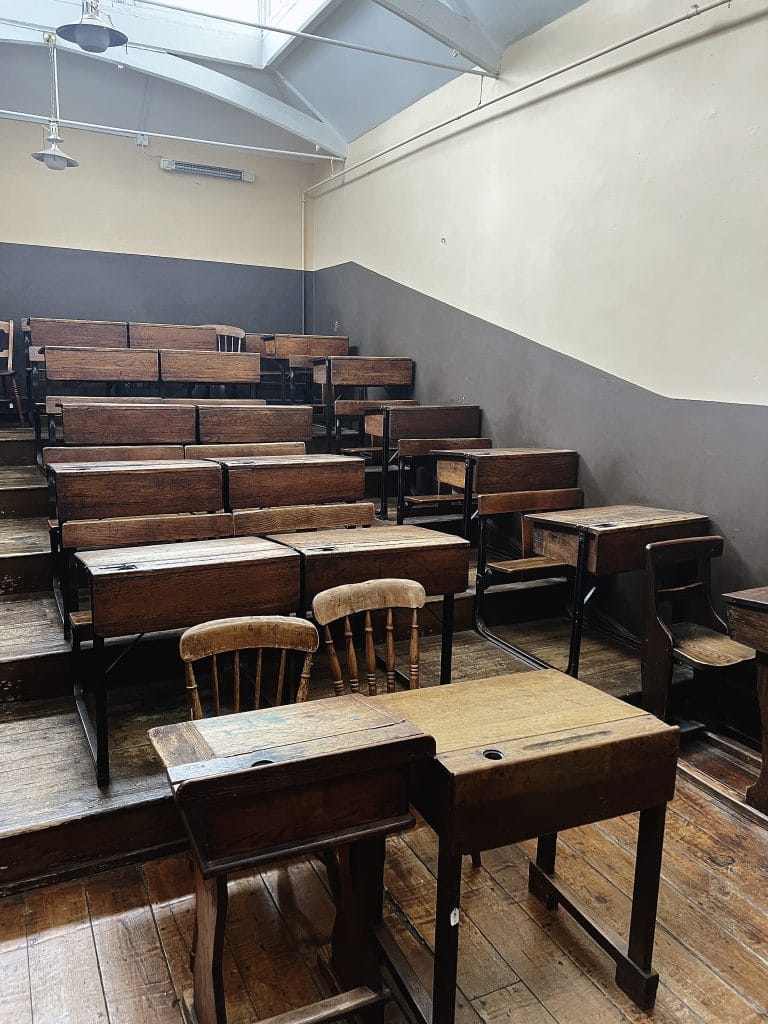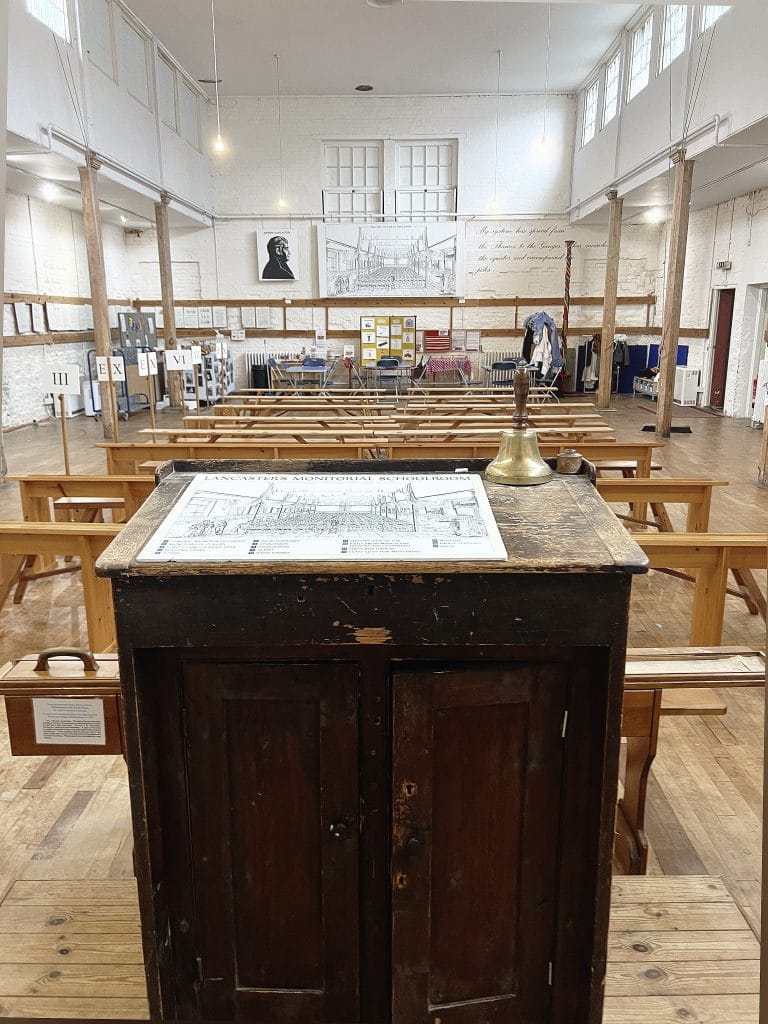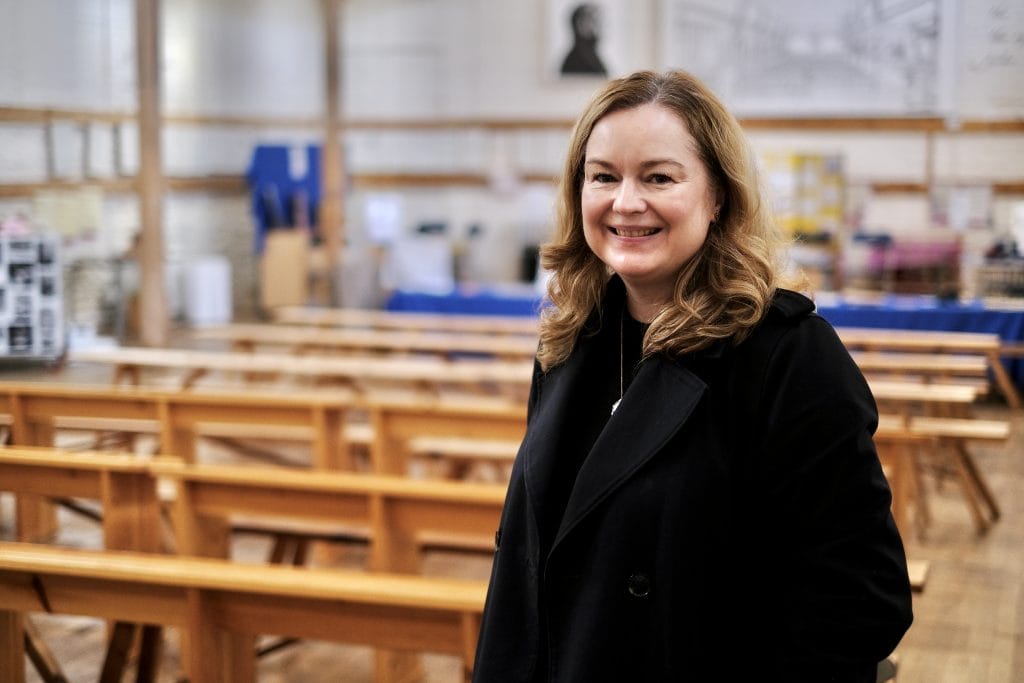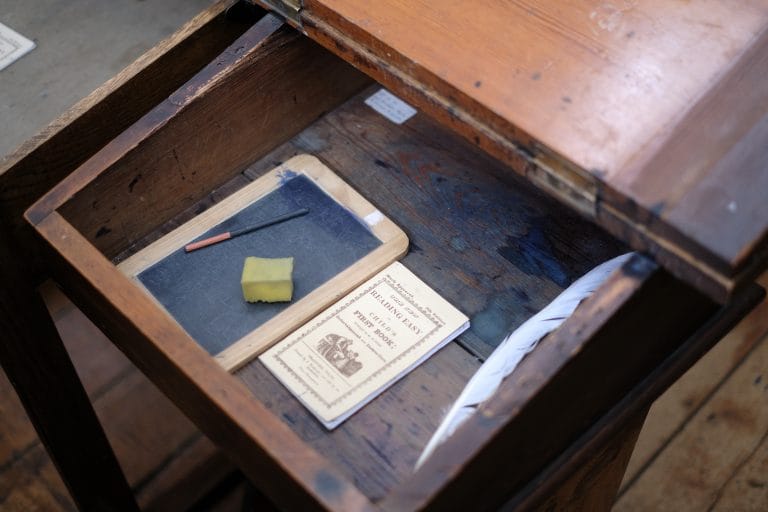OVO theatre company will be bringing its festive magic to Hitchin this winter! After three sell-out years in St Albans, our production of Charles Dickens’ A Christmas Carol returns by popular demand for a fourth season – at the new venue of the Vintry Garden in St Albans, and, for the first time, in Hitchin at the magnificent British Schools Museum.
Audiences will embark on a captivating promenade journey through the museum’s indoor and outdoor spaces, led scene-to-scene by the cast in a truly unique experience that captures the spirit of Christmas past, present, and yet to come. Directed and adapted by Royal Television Society winner Mark O’Sullivan, the magical 60‑minute performance will delight, amuse, and move both children and adults alike, leaving everyone brimming with festive cheer. Expect ghosts and goodwill, music and magic!
We’re especially thrilled to be performing in one of Hitchin’s most amazing venues – the incredible setting of the historic British Schools Museum. We caught up with the Museum’s manager, Emma Calver, to learn more about its fascinating history and ongoing work – and to discover why it provides such a fitting stage for Dickens’ timeless tale of ghosts and generosity!

1. Could you introduce your role and what a typical week looks like at the British Schools Museum?
I’m Emma Calver, Manager at the British Schools Museum in Hitchin. My role is to make sure the museum runs smoothly and continues to grow.
A lot of my week is spent planning events, developing partnerships, writing newsletters and funding bids, and working with our brilliant staff and volunteers. I also work to keep improving what we do, so the museum stays a welcoming place full of learning, creativity and community.
There’s always plenty happening here – from school visits and guided tours to family craft sessions, community projects and seasonal events, with our friendly café and volunteer team at the heart of it all. I love seeing how much people enjoy discovering everything we have going on.
2. Can you tell us about the original building and its location in Hitchin?
The site first became a school in 1810, when Hitchin was one of the first towns to adopt Joseph Lancaster’s new monitorial system of education. Lancaster’s system was a revolutionary idea at the time, giving poor, working children the chance to learn for the first time.
That original building no longer exists, but our oldest surviving classroom is the impressive 1837 Monitorial Schoolroom, the only one of its kind still standing anywhere in the world.
Over the years, more classrooms and buildings were added, and the site remained a working school right up until the 1960s. The museum now includes both Grade II and Grade II* listed buildings, right in the heart of Hitchin.
3. What is the story behind the creation of the museum?
After the school closed in 1969, the buildings were used for a time as a college and community space before eventually being put up for sale in the early 1990s.
The museum exists today thanks to local people who cared deeply about saving this unique site. When the buildings were under threat, a group of volunteers came together to stop them being lost or redeveloped, and worked tirelessly to restore and reopen them.
The museum opened in 1996 and has grown ever since into a lively place full of learning, creativity and activity. That sense of community involvement has never gone away. We are an independent museum and rely on income from visitors, school visits, café customers, funding grants and donors to survive. Most of our team are still volunteers, and we continue to rely on local support and partnerships to keep the museum thriving. It really is a museum that is part of the community.



4. What would you describe as the highlights of the museum?
Visitors enjoy how immersive it feels. You can sit at original wooden desks with slate boards and imagine being a Victorian pupil under the strict eye of the teacher. Our school groups love taking part in Victorian-style lessons in the original classroom, experiencing what life was really like for children in the 19th century, and general visitors are welcomed by our friendly Guides happy to give you a tour.
The Headmaster’s House, which is on site, shows how the headmaster and his family would have lived, in stark contrast to the working poor pupils who attended the school.
Alongside these historic spaces, we have a lovely play café, a temporary exhibition space, and a lively year-round programme that includes family crafts, Group visits, community events, regular talks on history and art, and performances of music and theatre.
Our current exhibition, Make Do and Mend, explores life on the Home Front during the Second World War. Many of our events and exhibitions are run in partnership with local groups and volunteers.
There’s always something happening and something new to enjoy.
5. For you, what makes the museum so special?
For me, what makes the museum so special is the people and the sense of community that surrounds it. It’s full of warmth and a shared love of learning. Everything here is real, from the floorboards to the inkwells, and you can feel the history all around you. But it’s also a very welcoming place, where people chat and make friends. Our volunteers bring so much enthusiasm and care, and that really shows in everything we do.
6. We hear there’s some stories of ghosts at the museum…what can you tell us about that?
There are a few places around the site that are especially known for ghostly goings on. Many people have heard footsteps in our collections corridor, which is said to be the spirit of former Headmaster William Fitch. A presence is also often felt between the Monitorial and First World War classrooms, where things have been known to move or fall during a paranormal investigation evening. The Headmaster’s House is also a place where people have had paranormal experiences.
We hold the occasional paranormal event, and they’re always popular and great fun. Whether or not you believe in ghosts, the museum has a wonderful atmosphere after dark. It’s quiet, dimly lit and full of stories, and it’s easy to see why it captures people’s imagination.

7. And finally, why do you think the museum is the perfect venue for A Christmas Carol, this year?
It’s such a perfect fit. The museum already feels like stepping into Dickens’ world, with its Victorian classrooms and creaking floorboards. You can almost imagine Scrooge himself appearing at the door. The story of A Christmas Carol is all about compassion, generosity and community, which are exactly the values that underpin what we do here. When OVO brings the story to life in this historic setting, I think audiences will feel completely transported. It promises to be something magical and a wonderful way to experience Christmas in Hitchin.

